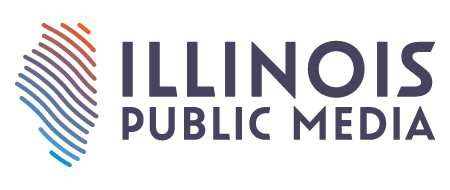One Of The World's Poorest Countries Has One Of The World's Lowest COVID Death Rates
Haiti has one of the lowest death rates from COVID-19 in the world.
As of the end of April, only 254 deaths were attributed to COVID-19 in Haiti over the course of the entire pandemic. The Caribbean nation, which often struggles with infectious diseases, has a COVID-19 death rate of just 22 per million. In the U.S. the COVID-19 death rate is 1,800 per million, and in parts of Europe. the fatality rate is approaching 3,000 deaths per million.
Haiti's success is not due to some innovative intervention against the virus. Most people have given up wearing masks in public. Buses and markets are crowded. And Haiti hasn't yet administered a single COVID-19 vaccine.
Dr. Jean "Bill" Pape says a combination of factors have kept the death rate so low.
Pape played a role similar to Dr. Anthony Fauci's in the U.S. The 74-year-old Haitian doctor served as the co-chair of a national commission in Haiti to deal with COVID-19, leading the country's effort to deal with the crisis. But the commission was dissolved earlier this year.
"The reason mainly is because we have very, very few cases of COVID," Pape says. The local health agency Pape heads, known as GHESKIO, actually shuttered its COVID-19 units last fall due to a lack of patients.
Last June, the country of 11 million was hit with a significant wave of infections. Hospital wards filled with COVID-19 patients. At the time, the country only had two places that could test for the virus, so the actual number of infections is unknown. Now, testing is far more available, but Pape says very few cases are detected each day.
"Sometimes it's two, sometimes zero, sometimes it's 20 cases," he says. "But we are not seeing a second wave, as we had thought would happen."
Pape says the country has pretty much gone back to the way life was pre-pandemic. Schools are open. Thousands of people packed the northern coastal Port-de-Paix for Carnival in February.
"Most people don't wear a mask," he says.
Not only have outdoor markets reopened; they were never completely closed.
Sheltering in place and working from home are luxuries most Haitians can't afford. As the poorest country in the Western Hemisphere, Haitians on average earn less than $2,000 per year according to the U.N. And most, Pape says, have gone back to work.
"Because if they don't work, they don't eat, their family doesn't eat," he says.
Concern about the pandemic is so minimal that this April, when the World Health Organization-led COVAX program offered Haiti a shipment of AstraZeneca COVID-19 vaccines, the government rejected it.
Dr. Jacqueline Gautier is on the national technical advisory group on COVID-19 vaccination.
She says ordinary Haitians and people in the medical community have heard reports of rare but severe side effects from the AstraZeneca vaccine in Europe, and they're in no rush to get that shot.
"Because COVID did not impact us as badly," she says, "people don't think it [the vaccine] is worth it actually."
Gautier is also the director of the St. Damien Pediatric Hospital on the outskirts of Port-au-Prince.
The pandemic may have had less of an impact in Haiti, she says, because it's a young country. The average age is 23. COVID-19 infections tend to be less severe in younger people. It's also possible, she says, that a significant number of people were infected by the virus last summer, showed no symptoms and built up immunity. Also houses tend to be open with plenty of ventilation – air flow can knock the pathogen out of the picture.
Whatever the reason, she says, COVID-19 hasn't become a daily concern for most Haitians.
"Also there are many other major problems the country is facing," she says. "So people don't see COVID as our major as a major problem for us. And who can blame them?"
The daily problems facing Haiti are many. There's poverty, political instability, wild fluctuations in the value of the local currency, corruption, armed gangs. Diarrhea remains a major killer of children.
"And kidnappings!" Gautier exclaims. "They are really a huge problem for the country."
So Gautier was fairly sure that Haiti had dodged the COVID-19 bullet.
Then she saw the catastrophic COVID-19 wave in India, coming after a span of time when it seemed the country had been spared the worst of the virus. Now she worries that a deadly surge may be in Haiti's future, too.
"We don't know," she says. "This disease, it is full of surprises."

Power the future of public radio. Donate today!
Celebrate 50 years of NPR by donating to your local station. You'll be funding reliable programming and fact-based reporting from journalists in your community, across the country and around the world.








